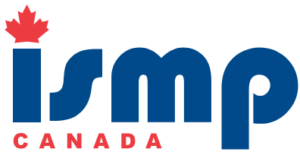Palliative Care: A Multi-Incident Analysis
An MIA was undertaken to identify complexities contributing to medication errors during care at end of life. The 3 themes identified were (1) hesitancy to treat opioid toxicity with naloxone, (2) errors in medication use processes such as transcription errors and administration errors, and (3) gaps in coordination of care.
Key Words:
- Terminal
- DNR
- Telephone orders and verbal orders
- Transitions of care
𝗦𝗶𝗱𝗲𝗯𝗮𝗿𝘀:
- Consumer “Good Catches”
- Health Canada’s Policy Statement on the Naming of Biologic Drugs
Introduction
As defined by the World Health Organization, palliative care is an “approach that improves the quality of life of patients and their families facing the problem associated with life-threatening illness, through the prevention and relief of suffering by means of early identification and impeccable assessment and treatment of pain and other problems, physical, psychosocial and spiritual”.1 Many patients receiving palliative care have complex symptom control needs and are receiving multiple medications (including high-alert medications such as high-potency opioids). If medication errors do occur, the consequences may lead to worsening of symptoms or unnecessary suffering, and may even hasten death.2,3 A multi-incident analysis was conducted to identify some of the complexities contributing to medication errors in this vulnerable population.
METHODOLOGY AND QUANTITATIVE FINDINGS
Medication incidents associated with palliative care were extracted from reports submitted to 3 ISMP Canada reporting databases* (Individual Practitioner Reporting, Consumer Reporting, and Community Pharmacy Incident Reporting) and the National System for Incident Reporting (NSIR)† from the time of inception of each database to March 4, 2019. Key terms used to search the databases included “palliat”, “end of life”, “dnr”, and “terminal”. A total of 582 incidents were identified and screened for inclusion. Of these, 384 incidents were not clinically relevant to palliative care, which left 198 incidents for analysis according to the methodology outlined in the Canadian Incident Analysis Framework.4 Of the included incidents reported to ISMP Canada’s databases, 19% resulted in death and an additional 22% resulted in harm. The 3 medications most commonly involved in these incidents were fentanyl, HYDROmorphone, and morphine.
QUALITATIVE ANALYSIS
The qualitative analysis identified 3 main themes, each with multiple subthemes (see Figure 1).
THEME: Hesitancy to Treat Opioid Toxicity
Opioid toxicity can cause respiratory depression, often leading to death, if interventions such as naloxone administration and/or cardiopulmonary resuscitation are not applied. When caring for a patient who has indicated that no life-saving or life-prolonging measures be used and who is experiencing opioid toxicity as a result of a medication error, the caregiver must decide whether to initiate aggressive treatment.5 Hesitancy to treat opioid toxicity in palliative care settings may also relate to concerns that such treatment could lead to severe pain and withdrawal symptoms. This analysis identified several incidents in which there was hesitancy to administer naloxone because of a “do not resuscitate” (DNR) directive on file for the patient.
Incident Example
A patient receiving palliative care was found unresponsive and displaying signs of opioid toxicity after accidental administration of an incorrect opioid. Naloxone was not administered because of the DNR directive on the patient’s chart. The patient later passed away.
To date, there has been very little investigation into the perspective of patients receiving palliative care and their desired treatment response to medication errors.6 As such, when an opioid administration error occurs in the palliative care setting, clinicians may feel the need for discussion with the patient’s family to determine the appropriate course of action, which may delay treatment.
THEME: Errors in Medication-Use Processes
In palliative care settings, opioids are frequently administered via an infusion pump for continuous pain management. Factors contributing to pump-related medication administration errors included use of incorrect tubing, user-related data entry errors, and drug name confusion between HYDROmorphone and morphine products.
Incident Example
During a home visit, the prescriber ordered an increase in the dose of opioid being administered via continuous infusion by doubling the concentration. In the interim, before the higher concentration opioid could be delivered, the rate was doubled to give the patient the intended opioid dose. When the higher concentration opioid was then connected to the pump, the rate of infusion was not reprogrammed to reflect the intended opioid dose. As a result, the patient received double the prescribed opioid dose. The patient was admitted to hospital for treatment of the overdose
One-third of the medication incidents in this analysis resulted from errors in the transcription of telephone orders or verbal orders for pain medications administered via an infusion pump. In palliative care settings, telephone orders are common because the prescribers typically practise in multiple locations and have limited on-site availability. Telephone orders and verbal orders are prone to error because drug names, doses, or instructions can be misinterpreted. Although safeguards have been incorporated into medication ordering processes in many healthcare settings, this analysis revealed that use of telephone and verbal orders continues to be problematic in the palliative care setting.
Incident Example
When phoning in a medication order for an opioid to be administered in liquid form to a patient receiving palliative care, the physician expressed the dose unit as “mL” (millilitres). The person receiving the order misinterpreted the order and transcribed the dose as “mg” (milligrams). As a result, the patient received 5 times the intended dose of opioid and subsequently died.
THEME: Gaps in Coordination of Care
Palliative care is often delivered as a consultation service provided by specially trained clinicians who assess the patient and then provide treatment recommendations to the primary healthcare providers.7 Ineffective integration of recommendations from the palliative care team can cause delays in timely symptom management.8 For example, a common finding was that members of the patient’s care team failed to implement or communicate suggested orders (e.g., to change or discontinue a medication) from the palliative care consultant. Miscommunication, related to gaps in coordination of care among multiple patient care services and to lack of standardization of information conveyed in hand-offs, was a contributing factor to many errors.8
As patients transition between different care settings, such as hospital, hospice, or home, incomplete handover of key information during the transitions of care can lead to medication errors.
Incident Example
A patient was transferred from home care to hospice care. The hospice team administered pain medications regularly, as listed on the patient’s home care medication profile. The patient experienced respiratory depression. Upon investigation, it was discovered that the patient had been taking the pain medications only rarely while at home; however, the actual frequency of administration had not been documented in the profile sent to the hospice
CONCLUSION
Patients receiving palliative care have unique needs and concerns, but limited research has been done to characterize medication errors in this setting. This multi-incident analysis identified themes related to medication incidents in the palliative care setting: hesitancy to treat opioid toxicity, errors in medication-use processes, and gaps in coordination of care. The analysis findings raise awareness of opportunities to improve patient safety when providing palliative care.
![]()
The Canadian Medication Incident Reporting and Prevention System (CMIRPS) is a collaborative pan-Canadian program of Health Canada, the Canadian Institute for Health Information (CIHI), the Institute for Safe Medication Practices Canada (ISMP Canada) and Healthcare Excellence Canada (HEC). The goal of CMIRPS is to reduce and prevent harmful medication incidents in Canada.
Funding support provided by Health Canada. The views expressed herein do not necessarily represent the views of Health Canada.

The Healthcare Insurance Reciprocal of Canada (HIROC) provides support for the bulletin and is a member owned expert provider of professional and general liability coverage and risk management support.

The Institute for Safe Medication Practices Canada (ISMP Canada) is an independent national not-for-profit organization committed to the advancement of medication safety in all healthcare settings. ISMP Canada’s mandate includes analyzing medication incidents, making recommendations for the prevention of harmful medication incidents, and facilitating quality improvement initiatives.
Report Medication Incidents (Including near misses)
Online: ismpcanada.ca/report/
Phone: 1-866-544-7672
ISMP Canada strives to ensure confidentiality and security of information received, and respects the wishes of the reporter as to the level of detail to be included in publications.
Stay Informed
Subscribe to the ISMP Canada Safety Bulletins and Newsletters.
This bulletin shares information about safe medication practices, is noncommercial, and is therefore exempt from Canadian anti-spam legislation.
Contact Us
Email: cmirps@ismpcanada.ca
Phone: 1-866-544-7672
©2025 Institute for Safe Medication Practices Canada.
